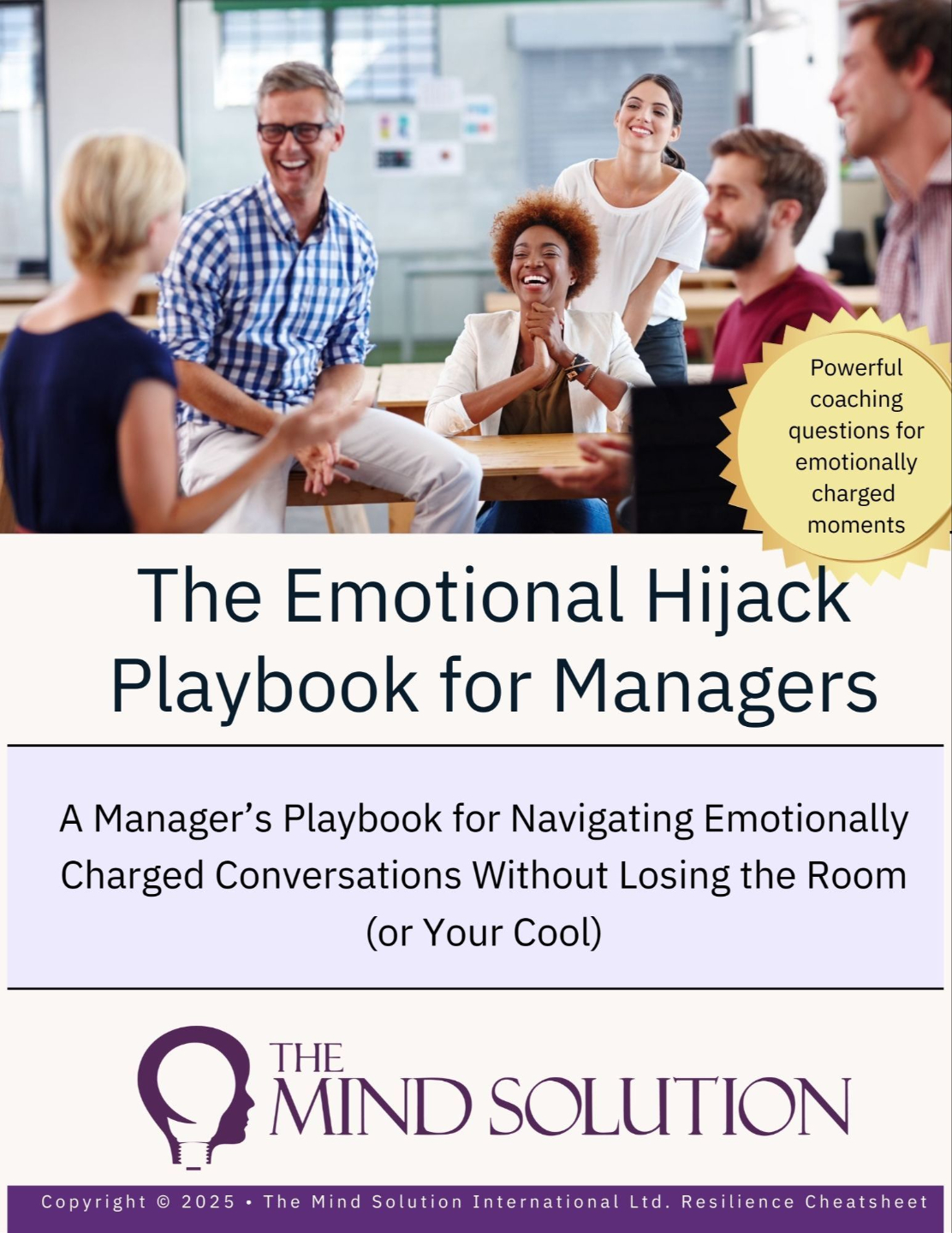How to Handle Stress At Work
Nov 03, 2025
A big part of learning how to handle stress at work starts with self-awareness, recognising that you’re in the stress response in the first place.
And while that might sound obvious, the truth is that many people have been operating from the hormones of stress for years. It’s become normal to live life at that level of tension.
When I was studying solution-focused psychotherapy 14 years ago, I realised that I’d spent much of my own career in a constant stress response, and I hadn’t even realised it.
The same realisation often lands for managers during our Mental Health Training for Managers. They suddenly see how often they’re living in the stress response day in, day out, without knowing it.
Recognising When You’re in the Stress Response
Self-awareness is your number one starting point for handling stress.
The body is always your feedback machine. It never lies.
Here are some of the ways you can tell when you’re running on stress hormones rather than calm clarity:
-
Constant muscle tension, tight shoulders, clenched jaw.
-
Racing thoughts or mental fog.
-
Feeling “wired but tired.”
-
Poor quality sleep or waking up at 3 a.m. with a busy mind.
-
Digestive issues, headaches, skin breakouts.
-
Short temper, impatience, or snapping over small things.
-
Relying on caffeine or sugar to get through the day.
If you’re noticing any of these, your nervous system is in the sympathetic response, fight, flight, freeze, or fawn. And that’s the body signalling one simple message: I don’t feel safe.
Stress Is Addictive
It may surprise you, but stress is actually addictive.
When the stress response first activates, adrenaline and cortisol flood the system, giving you a temporary boost. Over time, the body begins to crave that surge of chemicals, just like it would crave caffeine or nicotine.
That’s why people often find it hard to slow down. The brain associates being calm with being unsafe, and being stressed with being productive.
But chronic stress isn’t a performance strategy; it’s survival mode.
Challenging Your Beliefs About Stress
Many people still believe that stress is a good thing, that they need stress to perform. This is a topic that comes up frequently in our workplace training.
When managers understand the neuroscience of stress, they see the reality: stress doesn’t sharpen focus; it narrows it. It doesn’t create clarity; it triggers tunnel vision.
Short bursts of healthy pressure can motivate, but ongoing stress shuts down creativity, empathy, and decision-making.
Which brings us to the next important distinction.
Stress vs Pressure: A Fine Line
There’s a subtle but vital difference between stress and pressure.
-
Pressure is when the challenge ahead feels achievable - you’re motivated, focused, and alert.
-
Stress is when the challenge feels unmanageable - you move into fear, overwhelm, and self-doubt.
The line between the two is your nervous system.
When your nervous system is regulated, pressure feels like purpose.
When it’s dysregulated, pressure turns into stress.
That’s why learning how to handle stress at work isn’t just about mindset; it’s about emotional regulation.
How to Handle Stress at Work: Three Simple Practices
Ultimately, handling stress is about prevention over cure.
We don’t just want to “manage” stress; we want to live from a foundation of emotional resilience. And that starts with regulating the nervous system daily.
1. Heart-Coherence Breathing
This technique balances the heart and brain, moving your body out of stress mode.
-
Breathe in through your nose for five seconds, hold for two, then out through your mouth for seven.
-
Do this slowly for seven minutes a day.
-
Focus your attention on the heart area as you breathe, and imagine the breath moving in and out of your heart.
Even a few minutes of this every day can bring your body back to coherence and calm.
2. EFT Tapping
EFT (Emotional Freedom Technique) is one of the most powerful stress-reduction tools available. It combines acupressure and psychology to calm the amygdala—the part of the brain responsible for the stress response.
You can learn more in my interview with Dr Peta Stapleton, one of the world’s leading researchers on EFT tapping. (Link to the blog with her interview.)
3. Self-Awareness and Observation
When we’re not fully present, we live life through a survival-based thought template.
Stress doesn’t always show up as panic; it can appear as impatience, anger, frustration, guilt, or even hurt.
The key is to notice these emotional patterns as they arise. Because when you catch yourself heading down those old familiar loops, you can choose a different response, but only when you’re emotionally regulated.
That’s why daily emotional regulation through practices like heart-coherence breathing and EFT tapping sits right at the top of the list for staying calm, centred, and effective at work.
Prevention, Not Cure
Handling stress at work isn’t about firefighting symptoms; it’s about changing the internal conditions that create stress in the first place.
When people learn to regulate their nervous system, they no longer need to “manage” stress. They naturally return to their baseline of calm, focus, and emotional balance.
And that shift doesn’t just transform how individuals feel, it transforms how teams operate.
For HR Leaders: Build Emotional Resilience in Your Organisation
If you’re an HR leader or L&D professional looking to create emotional resilience in the workplace so your people can thrive without stress and burnout, contact us today to find out more about our Emotional Resilience Training.
Because when your people are emotionally regulated, they don’t just handle stress—they transform it.
The Emotional Hijack Playbook For Managers
A Manager’s Free Resource for Navigating Emotionally Charged Conversations Without Losing the Room (or Your Cool).
Perfect to use in your next one-to-one.







